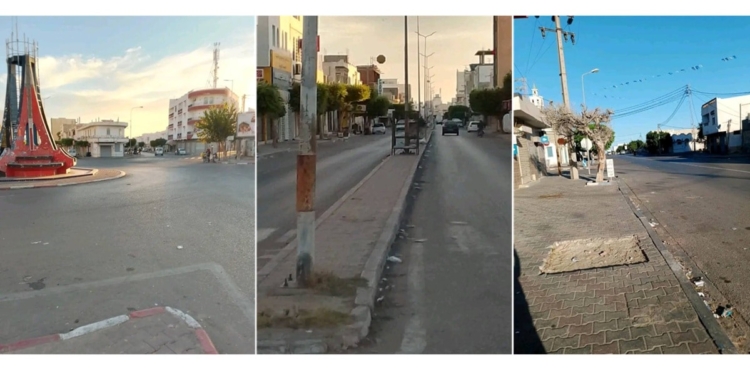The governorate of Gabès is witnessing a massive general strike this Tuesday, organized by the Regional Labor Union and supported by the UGTT, to protest against industrial pollution from the Tunisian Chemical Group (GCT).
Deserted streets and closed businesses reflect the scale of the movement, while some vital activities, such as emergency services, continue to operate.
An angry city
From the early hours of the morning, the city center of Gabès was almost deserted, with traffic interrupted and businesses closed.
According to Slim Nasfi, member of the executive board of the Regional Labor Union, participation in the strike reached 95%, a figure which reflects the general concern about industrial pollution and the desire for radical action to guarantee healthy air and a safe environment.
The strike decision was taken on Saturday October 18 by the regional administrative commission of the central union, after an emergency meeting devoted to the environmental crisis.
The slogan aims to denounce the continuation of the polluting activities of the GCT and the silence of the authorities in the face of the alarming deterioration of the health and ecological situation.
Local union structures describe this day of total shutdown as a “collective cry of warning”, intended to recall the urgency of a national dialogue on the industrial and environmental future of Gabès, and to demand the implementation of the State’s commitments in matters of environmental justice.
An almost total paralysis of the city
Schools and universities remain closed, as do markets, shops and cafes. Traffic is almost zero in the streets, illustrating the scale of the mobilization. This movement is part of the continuity of several days of popular demonstrations, marches, sit-ins and online campaigns, demanding the dismantling of polluting units and the protection of the coastline and residents.
Despite the almost complete cessation of activities, certain vital functions, notably emergency services, continue to operate to guarantee the safety and health of citizens. This measure makes it possible to reconcile citizen mobilization and the fundamental needs of the population.
Read also








